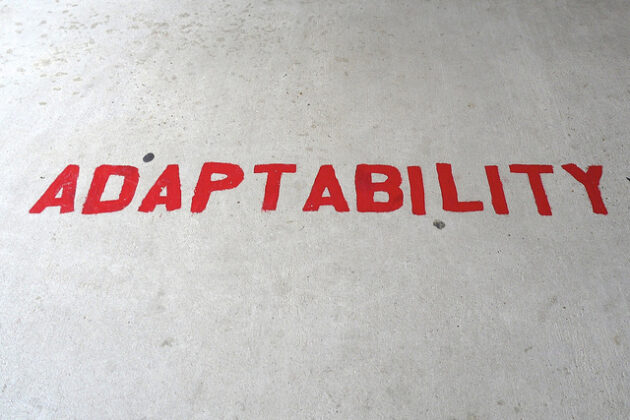
You can’t go anywhere in the nonprofit sector these days without hearing people talk about how quickly the world around us is changing — and it’s true that the economy, philanthropic priorities, politics, and technology are all shifting right now.
For some nonprofits, uncertainty about external conditions has made it difficult to complete a traditional strategic planning process. You know what I mean by “traditional” — some research into the organization’s internal health and external situation, followed by a Saturday planning retreat to determine vision, and then a number of committee meetings where you work out goals, strategies, and the finances it will take to implement the work. But when the environment you’re working in has many unknown factors, how do you make decisions that you can stick with for three or five years?
Maybe we need a more flexible approach to organizational planning — one that provides a direction-setting compass rather than a strict road map. If changing external conditions make it hard to predict exactly what we’ll need to do three (or even one) years from now, adaptive planning can help us to develop a strategic approach that will work over time.
Adaptive planning allows an organization to decide on its most critical priorities in the coming years…but does not require you to map out the exact strategies you will use to achieve them. Instead, this planning model encourages ongoing experimentation, pilot projects, and continual evolution of your strategy as outside conditions change. The Monitor Institute has written an excellent article that summarizes how adaptive planning actually works in a nonprofit environment.
So, how do you know if your organization is ready to try adaptive planning?
- Market conditions that truly affect your organization are uncertain. Remember that uncertainty is not a feeling. Uncertainty represents the unknowns that remain after you have carefully analyzed your situation. Adaptive planning is best used when you have real uncertainty that directly affects what you should or should not do.
- You understand your theory of change. Your theory of change should illustrate what you want to achieve, and what changes will have to occur in order for you to reach that goal. For example, you may know that you want to preserve more open space in your community. In order to get there, you will have to get local officials to appreciate the value of open space. But there are many ways to sway those officials, so you have to make a choice about what to do. You can use adaptive planning strategies to determine your own actions, as long as you are clear about what you are trying to accomplish and what will be required to get there.
- You are willing to experiment. Adaptive strategy is most effective when you can see different options for achieving your goals, but you’re not sure which one will work best. Instead of making a firm choice during your planning process and sticking with it for years, choose to conduct experiments over a defined period of time, and see which ones get the best results.
- You can conduct ongoing evaluation. Of course, if you’re going to conduct experiments, you also have to be willing to assess what’s working and what’s not, and make changes to improve your results. This requires constant attention and the discipline to act upon what you learn as you go along.
- You can tolerate some ambiguity. Adaptive planning does not work well for people (or organizations) that need to know the answers to everything before they can act. You’ll be learning as you go.
- You’re ready to make top-level decisions based upon feedback from the front lines. Since you will be making decisions about the future based on “real time” results from your various pilot projects, your organization has to be ready to hear feedback from its front line staff and work collaboratively with them to implement changes.
- You can tolerate (some) failure, seeing this as a reasonable outcome of experimental work. If you are truly acting in an “adaptive” way, some of your experiments will fail to get the results that you intended. Board and staff members have to accept this as reasonable, and avoid unintentional (or intentional) punishment of those who carried out the work. If staff members think they will suffer career consequences if the pilot they are leading doesn’t work out, no one will want to lead future pilots.
- You can act on what you learn to improve future results. Your organization is disciplined enough to learn from both your failures and your successes and change your actions accordingly. Organizations (and people) that dislike frequent changes to their tasks and approach will struggle.
Adaptive planning asks the same questions as traditional strategic planning – but how you answer them is very different. Instead of goals-objectives-strategies-tactics, you will wind up with initiatives, project ideas, experiments, evaluation tools, and measurements of success. In truth – most organizations are using some form of adaptive planning already, as we respond to changing opportunities or difficult challenges. The adaptive planning process allows you to formalize what you already know about staying alert to change – and can help everyone in your organization feel more confident that you’re still moving in the right direction.

Allison Trimarco is the founder and principal of Creative Capacity, a consulting firm that collaborates with nonprofits to find creative solutions to management challenges. She is also an affiliated consultant and instructor at The Nonprofit Center at La Salle University’s School of Business.
Photo at top is via Creative Commons/Nicole Yeary
